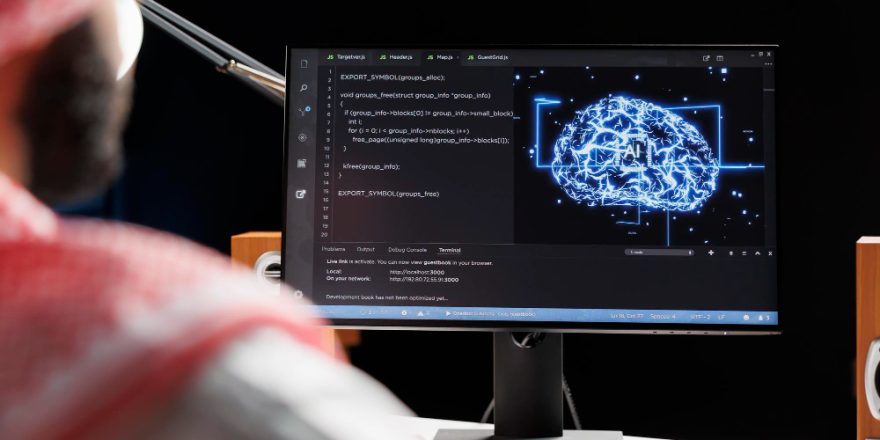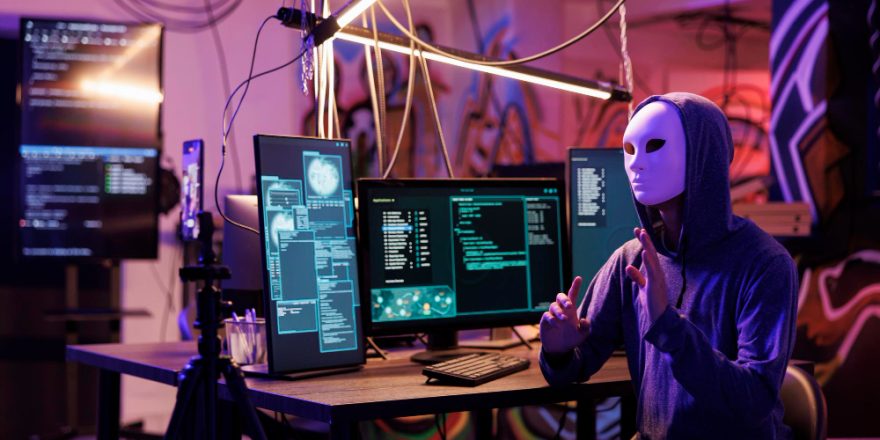Remote learning, also known as online learning or distance education, refers to the delivery of education and instructional content through digital platforms and technologies, often without the need for physical classroom attendance. It encompasses a wide range of approaches, including synchronous and asynchronous learning, virtual classrooms, video lectures, online assignments, and interactive multimedia resources.
Key Features of Remote Learning
- Flexibility: Allows learners to access educational content and participate in learning activities at their own pace, time, and location.
- Accessibility: Provides opportunities for individuals from diverse backgrounds, geographic locations, and circumstances to access quality education.
- Technology Integration: Leverages digital tools, platforms, and resources to facilitate teaching, learning, collaboration, and assessment.
- Personalization: Offers opportunities for personalized learning experiences tailored to individual needs, interests, and learning styles.
Impact of the Remote Learning Revolution
The remote learning revolution has had far-reaching implications for students, educators, institutions, and the education ecosystem as a whole.
- Accessibility and Inclusivity
- Global Reach: Remote learning has expanded access to education, reaching learners in remote areas, underserved communities, and developing countries.
- Diverse Learners: Provides opportunities for individuals with disabilities, health issues, or other challenges to access educational resources and support services.
- Flexibility and Convenience
- Learner-Centric Approach: Allows learners to engage in learning activities at their own pace, schedule, and convenience, accommodating diverse lifestyles, responsibilities, and preferences.
- Work-Life Balance: Enables adult learners, working professionals, and non-traditional students to pursue education while balancing other commitments.
- Technology Integration and Innovation
- Digital Transformation: Catalyzes the adoption of digital technologies, platforms, and tools in education, driving innovation in teaching, learning, assessment, and administration.
- Emerging Technologies: Facilitates the integration of emerging technologies such as artificial intelligence (AI), virtual reality (VR), augmented reality (AR), and machine learning (ML) into educational practices.
- Challenges and Opportunities
While remote learning offers numerous benefits, it also presents several challenges and opportunities for educators, students, and institutions.
- Challenges of Remote Learning
- Digital Divide: Disparities in access to technology, internet connectivity, and digital literacy pose barriers to participation and success in remote learning.
- Engagement and Motivation: Maintaining student engagement, motivation, and active participation in online learning environments can be challenging.
- Social Isolation: Lack of face-to-face interaction and social connections in remote learning settings may impact students’ emotional well-being and sense of belonging.
- Pedagogical Shift: Educators may face challenges in adapting teaching methods, instructional strategies, and assessment practices to online environments.
- Technical Issues: Technology glitches, internet disruptions, and platform limitations can disrupt the learning process and cause frustration for both students and educators.
Opportunities of Remote Learning
Despite these challenges, remote learning also presents significant opportunities for innovation, collaboration, and transformation in education.
- Flexibility and Customization
- Personalized Learning: Enables educators to tailor instruction, assignments, and assessments to individual learner needs, interests, and learning styles.
- Differentiation: Provides opportunities for differentiated instruction, adaptive learning pathways, and competency-based assessment.
- Global Collaboration and Networking
- Virtual Classrooms: Facilitates collaboration, communication, and knowledge sharing among students and educators across geographic boundaries and cultural contexts.
- International Partnerships: Promotes cross-cultural exchange, joint research projects, and international collaborations between educational institutions.
- Lifelong Learning and Professional Development
- Continuing Education: Supports lifelong learning and professional development for learners of all ages and career stages, offering access to online courses, certifications, and skills training.
- Teacher Training: Provides opportunities for educators to enhance their pedagogical skills, technology proficiency, and digital literacy through online professional development programs.
- Technological Integration and Innovation
- EdTech Solutions: Fosters innovation in educational technology (EdTech), driving the development of new tools, platforms, and resources to enhance teaching, learning, and assessment.
- Experimentation and Research: Encourages experimentation, research, and evidence-based practices in educational technology, instructional design, and learning science.
Strategies for Effective Remote Learning
To maximize the benefits of remote learning and address its challenges, educators can implement the following strategies:
- Designing Engaging and Interactive Learning Experiences
- Multimedia Content: Incorporate multimedia elements such as videos, animations, simulations, and interactive activities to enhance engagement and comprehension.
- Collaborative Projects: Design group projects, discussions, and peer collaborations to promote interaction, teamwork, and critical thinking skills.
- Real-World Applications: Integrate real-world examples, case studies, and problem-solving tasks to demonstrate the relevance and practicality of course concepts.
- Leveraging Technology Tools and Platforms
- Learning Management Systems (LMS): Utilize LMS platforms to organize course materials, deliver content, facilitate communication, and assess student learning.
- Video Conferencing: Conduct virtual lectures, discussions, office hours, and tutoring sessions using video conferencing tools such as Zoom, Microsoft Teams, or Google Meet.
- Collaboration Tools: Use online collaboration tools such as Google Workspace, Microsoft Office 365, or Slack to facilitate group work, document sharing, and project collaboration.
- Providing Ongoing Support and Feedback
- Virtual Office Hours: Offer virtual office hours, tutoring sessions, and academic support services to assist students with course content, assignments, and questions.
- Feedback and Assessment: Provide timely and constructive feedback on assignments, assessments, and student inquiries to guide learning and improve performance.
- Peer Support Networks: Facilitate peer-to-peer support networks, study groups, and discussion forums to encourage collaboration, knowledge sharing, and mutual assistance.
- Promoting Active Learning and Engagement
- Active Learning Strategies: Implement active learning techniques such as problem-solving activities, case studies, role-playing simulations, and experiential learning exercises.
- Student-Centered Approaches: Empower students to take ownership of their learning through self-directed inquiry, project-based learning, and reflective practice.
- Gamification Elements: Integrate gamification elements such as badges, points, leaderboards, and rewards to motivate student engagement and participation.
- Cultivating a Supportive Learning Community
- Community Building: Foster a sense of community, belonging, and inclusivity among students through icebreaker activities, introductions, and virtual social events.
- Student Engagement: Encourage active participation, peer interaction, and collaborative learning experiences to create a vibrant and supportive learning community.
- Inclusive Practices: Adopt inclusive teaching practices and accommodations to support diverse learners, including those with disabilities, learning differences, or language barriers.
Future Trends in Remote Learning
As remote learning continues to evolve, several trends are expected to shape its future trajectory:
- Hybrid Learning Models
- Hybrid learning models, which combine elements of both remote and in-person instruction, are likely to become more prevalent. These models offer the flexibility of remote learning while also providing opportunities for face-to-face interactions, hands-on experiences, and social connections.
- Artificial Intelligence (AI) Integration
- AI-powered adaptive learning systems can personalize instruction, recommend tailored resources, and provide real-time feedback based on individual learner needs and performance.
- Natural language processing (NLP) and sentiment analysis technologies can analyze student engagement, sentiment, and interactions in online discussions and forums to inform instructional design and interventions.
- Virtual Reality (VR) and Augmented Reality (AR)
- VR and AR technologies can create immersive learning environments that simulate real-world scenarios, allowing students to explore complex concepts, practice skills, and engage in experiential learning.
- VR-based virtual laboratories, simulations, and field trips can provide hands-on experiences in STEM disciplines, healthcare, architecture, and other fields.
- Data Analytics and Learning Analytics
- Learning analytics platforms can analyze large datasets of student interactions, behaviors, and performance to identify patterns, trends, and insights that inform instructional decision-making and interventions.
- Predictive analytics models can forecast student outcomes, identify at-risk students, and recommend targeted interventions to improve retention, completion rates, and learning outcomes.
- Microlearning and Just-in-Time Learning
- Microlearning modules, which deliver short, focused learning nuggets on specific topics or skills, can cater to learners’ busy schedules, short attention spans, and on-the-go learning needs.
- Just-in-time learning resources, such as quick-reference guides, tutorials, and video tutorials, can provide immediate support and assistance to learners when they encounter challenges or questions.
Conclusion
The remote learning revolution has transformed the landscape of education, ushering in a new era of innovation, flexibility, and accessibility. As educators, institutions, and learners navigate the challenges and opportunities of remote learning, it is essential to embrace effective strategies, leverage technology tools, and foster supportive learning communities.





